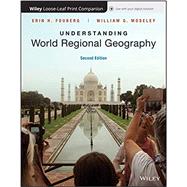Understanding World Regional Geography (UWRG) is a course designed to teach students to think and apply geographic concepts long after the course is over. Author Erin Fouberg draws from her expertise in geography education and research in student learning to create a product that has a strong pedagogical framework designed to engage students and deepen their understanding of the world by having them “DO” Geography. UWRG includes features that help students learn to read cultural and physical landscapes, ask geographic questions, apply geographic concepts, and make connections. It integrates 25 threshold concepts and teaches students how geographers apply these concepts and asks them to apply these concepts themselves. This enables them to grasp the complexities of the world and provides them with the knowledge and thinking skills necessary to understanding it. UWRG is the first introductory course to integrate ESRI ArcGIS Online thematic maps, enabling students to engage with course materials, see patterns, and answer geographic questions.








